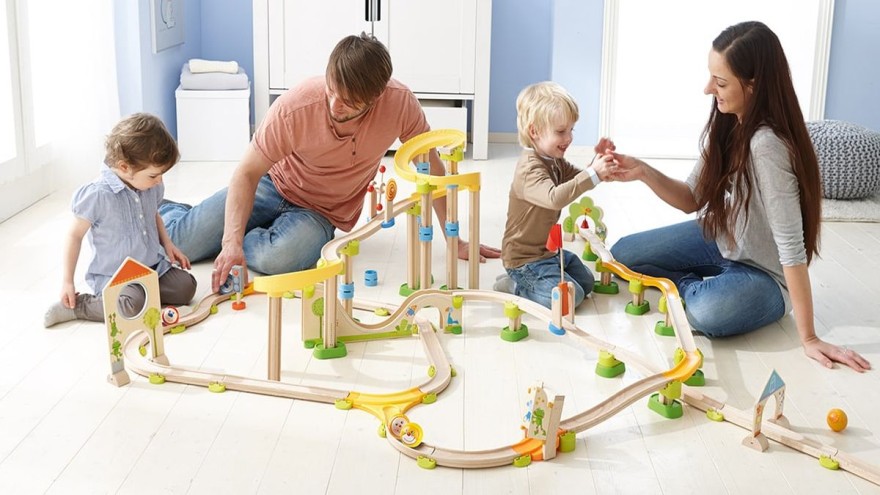Analog vs. digital: Duel in the toy chest?
27 Apr 2020

Lego Hidden Side App combines the advantages of digital and analog gaming - © Lego
Digitalisation is now also defining children’s bedrooms - especially the colourful world of toys. However, digital games for the little ones polarise; many parents tend to be skeptical about them and prefer traditional games instead. In our blog post, we do away with the prejudices and show how both can be combined in a meaningful way.
Digital toys in and of themselves are not new, they also existed 20 years ago. Who doesn’t remember the first musical teddy bears or the popular Tamagotchi? There was criticism even back then. However, the smart toys of today polarise in an entirely different way. These toys are now completely digitally networked via WLAN or Bluetooth and can do much more: Helicopters can be easily controlled via app and dolls can respond to kids’ questions individually thanks to the IoT.
It is exactly this kind of digital connectivity that is often viewed critically because data protection and security gaps are an issue for society as a whole, which is further intensified when it comes to our own children. Parents should therefore fully inform themselves beforehand and set the toy up together with their child while talking to them about it. However, there are also prejudices on the pedagogical level: Digital toys overwhelm as a result of too much stimuli, do not contribute to children’s development and do not inspire creativity or imagination.
That is why many parents turn to traditional analog toys, preferably made of wood or other sustainable materials, which promote motor skills, language development and creativity – recently there has even been talk of a “revival of analog (outdoor) toys”.This raises the question of whether the toy world is really so divided into “good” and “bad”? Is it always necessary to choose sides or can both types of toys be combined in a meaningful way?
Promoting different senses and skills
Digital and analog toys do not outdo each other and one is not better or worse than the other, but rather encourage different skills and senses in children. Physical toys focus primarily on discovering the sense of touch and motor skills, and also promote social interaction through shared, free, intuitive play. For the popular HABA Kullerbü ball track , there are several extensions so kids can try out endless possibilities. And the colourful Stapelsteine from joboo not only encourage movement but also cognitive development by doing stacking activities together.

With HABA Kullerbü, kids can try out endless possibilities - © HABA
Of course, with digital games, the tactile aspect in particular is missing. On the other hand, they can stimulate the imagination in a three-dimensional space – as well as spontaneity and reaction speed. And there’s another advantage: Digital toys impart knowledge in a playful way. This is the case with the Videoglobus from vtech , which lets children discover the world interactively – isn’t that wonderful?
Combining both types of toys goes a long way in furthering children in the best possible way. A study conducted by the research institute Goldmedia has shown that “phygital games” have positive effects on sensory and motor function and make children more creative. So what do these games look like?
Digital features do not make sense everywhere
The possibilities are infinite, the good old wooden railway can be equipped with interactive elements or augmented reality integrated into outdoor games. Right now, Lego Hidden Side : is especially popular. Children can assemble the bricks in the traditional way and also add the app to discover hidden treasures or solve puzzles in the digital world.
One thing we need to bear in mind in the overall discussion is that children as digital natives do not really differentiate between digital and analog. What is usually important to them is the added value of the playful aspect, whether its programming robots or looking at objects under a microscope. This is why digital features do not make sense for every toy segment.
We are eager to see what exciting toys await us in the future!
